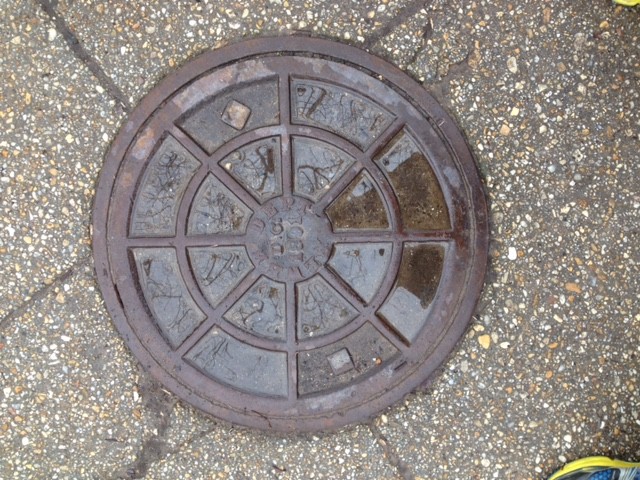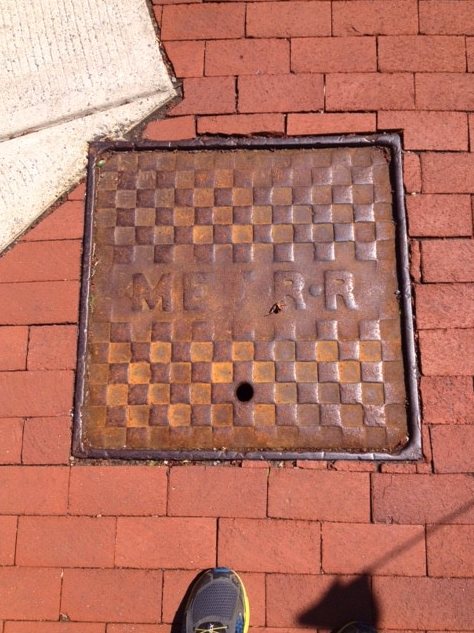There’s history to behold on some of DC’s manhole covers

An extant manhole cover from the Anacostia & Potomac River Railroad. Image by the author.
The District has thousands of manhole covers, and a lot of them offer a glimpse into the city’s history. The atop this post, for example, is from a 19th Century streetcar company that hasn’t existed in over 100 years.
The “A&P RR” refers to the Anacostia and Potomac River Railroad, which was the fourth streetcar company to begin operation in DC. A&P ran from 1876 until 1912, when the Washington Railway and Electric Company bought it.
The manhole was almost surely for below-the-street electrical power access. A&P was the last company to switch from horse-cars to electric power, making the switch in 1900, so we can reasonably assume this cover to be from between 1900 and 1912.
This cover is on 11th Street SE, between Pennsylvania Avenue and Lincoln Park. I’ve seen three covers like it in the area, and another on Maryland Avenue NE, just east of 14th Street by the Checkers. These locations are a bit surprising since the A&P didn’t run on these streets, nor did any other streetcar. The A&P did run in 11th Street SE, but only south of Pennsylvania Avenue.
Below are some other manhole covers and access panels that I've spotted around DC.
This one is a sewer manhole from 1891:
There are many of these dated sewer covers around DC all from the 1891-1908 time period. In the 1880's Washington became the first city in the world to use concrete sewer mains, but I don't know if these manholes are related to that (or why DC decided to put the years on them).
This one is a manhole cover or some sort of cap from the Fred J. White foundry:
The White foundry was located where the Air and Space Museum is now in the early 20th century, but generations of the White family operated foundries, back to a location on Maine Avenue in 1876. Many homes in the Capitol Hill neighborhood have cast iron stairs and stoops at their front door that were made at the White Foundry, but this manhole cover in front of the old J.R. Giddings school on Capitol Hill is the only one I know of.
Here's an access box for the Metropolitan Railroad on East Capitol Street:
There are actually a few of these on East Capitol, some in the street and at least one on the sidewalk (for the longest time I missed this, thinking it read “Metro” or “Meter” before I realized it said METRR). The Metropolitan was the city's second streetcar company, dating back to 1864. The line on East Capitol was built in 1888 and ended at the extant Car Barn at 15th Street. The company folded into the Washington Railway and Electric Company in 1902.
This is a C&P Telephone manhole from Suitland Road:
The Chesapeake and Potomac Telephone Company dates back to 1883, but the company became C&P, using the Bell logo, in 1969. It was on a C&P Telephone that Nixon called to congratulate astronauts on the moon. In 1984, C&P was replaced by Bell Atlantic.
This is an updated version of a post we ran in 2015.




